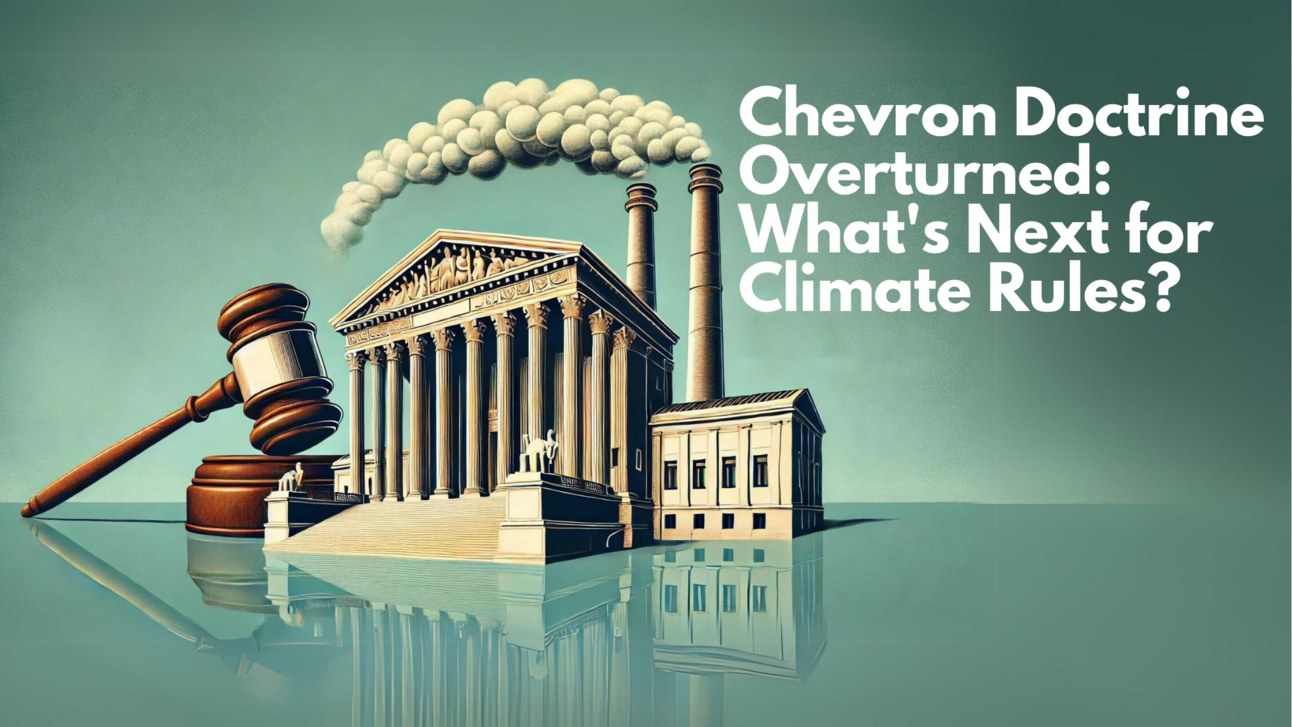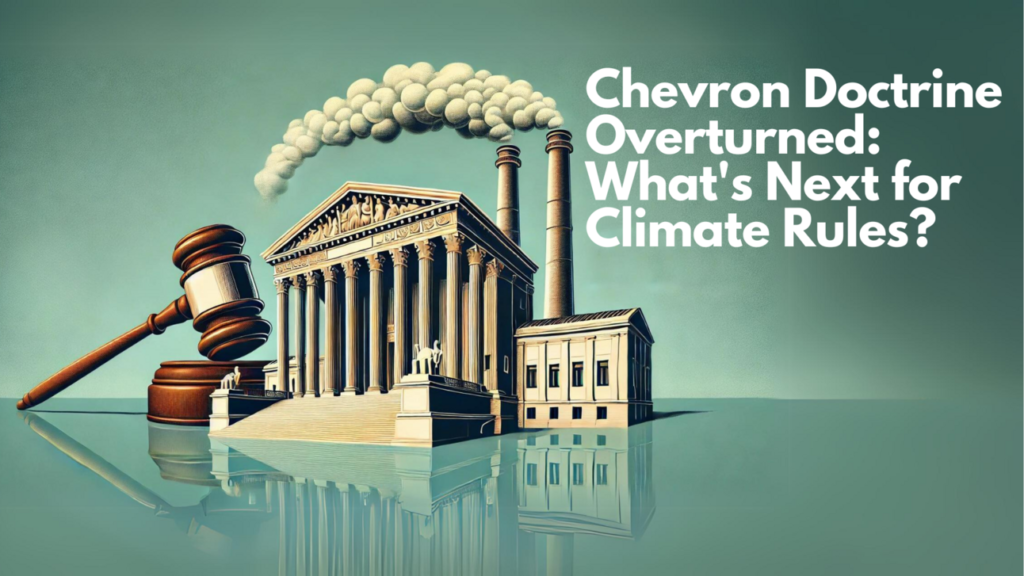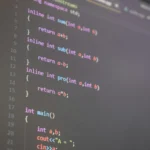With the nomination of Neil Gorsuch to the U.S. Supreme Court, a certain “magic word” has begun to make its way into public discourse. This word is whispered among legal scholars, feared by law students, and revered in the halls of federal agencies. It’s not just the name of a gas station in your hometown—it’s Chevron. And understanding what Chevron means, especially in the context of its potential overturn, is critical to grasping modern administrative law.In this article, we’ll break down what Chevron is, why it matters, and what might happen if it’s overturned.

Part I: What is Chevron?
Chevron refers to a pivotal 1984 Supreme Court case—Chevron U.S.A., Inc. v. Natural Resources Defense Council, Inc.—which fundamentally shaped the relationship between federal agencies and the courts. Here’s the story.
The Background: Clean Air Act and “Bubbling”
In 1981, the Environmental Protection Agency (EPA) issued a rule interpreting part of the Clean Air Act (CAA). The law required stricter pollution controls for “new or modified” sources of pollution. The key question was how to define “new” and “modified” sources. Was a single piece of a refinery being replaced or repaired considered a “new” source, or should the facility as a whole be treated as a single “bubble,” allowing changes without triggering strict pollution controls?
The EPA decided that a facility could be treated as a single unit—allowing for individual changes within the facility without triggering the more expensive “new source” requirements. Chevron, the oil company, benefited from this interpretation, while the Natural Resources Defense Council (NRDC) argued that the EPA had overstepped its bounds.Continue reading here clubnnet.
The Ruling: Chevron Two-Step
The Supreme Court sided with the EPA and set a standard for how courts should handle situations where the language of a statute is ambiguous. This ruling established what is now known as the “Chevron Doctrine,” a two-step process that courts use to review agency interpretations of federal laws:
- Step One: Is the statute clear? If Congress’s intent is clear and unambiguous, the court must enforce it as written.
- Step Two: If the statute is ambiguous, the court must defer to the agency’s interpretation of the law, as long as that interpretation is “reasonable” and not “manifestly contrary to the statute.”
In simple terms, Chevron gives agencies the authority to interpret vague laws—like deciding what counts as a “new” pollution source under the Clean Air Act—and courts must usually defer to their expertise.
Part II: Why Does Chevron Matter?
The Chevron case is crucial for understanding the power dynamic between Congress, federal agencies, and the courts. Here’s why it’s so important—and controversial.
The Role of Agencies
Congress often passes laws that are broad and sometimes ambiguous, leaving federal agencies to fill in the details. Agencies like the EPA have the expertise and resources to make technical decisions that lawmakers may not fully understand or have time to address in detail.
The Chevron doctrine essentially says that courts should trust these agencies to interpret ambiguous laws, since they are the ones with specialized knowledge. In other words, if Congress is unclear in its writing, it’s up to the agency to figure out what it meant—and courts should generally support that.
The Expansion of the Administrative State
The Chevron ruling has come to symbolize the expansion of the “administrative state”—the web of federal agencies that regulate everything from environmental policy to labor laws. Over the past century, these agencies have grown in number and power, as Congress has passed more complex laws requiring technical expertise.
Some critics argue that Chevron has allowed unelected bureaucrats to wield too much influence over American life. Instead of Congress writing clear laws and courts interpreting them, agencies are left to define what the law actually means in practice. For example, an agency’s interpretation of the Clean Air Act could determine whether a factory upgrade counts as a “new source” requiring stricter pollution controls or not.
The Court’s Silence Before Chevron
Before Chevron, courts had been relatively silent about the role of agencies in interpreting statutes. The idea that agencies have the power to interpret ambiguous laws wasn’t new, but Chevron made it explicit and solidified the legal standard.
Part III: What Happens If Chevron Is Overturned?
With the appointment of Justice Neil Gorsuch, discussions about overturning Chevron have intensified. Gorsuch is a vocal critic of the Chevron doctrine, and his addition to the Court could shift the balance toward limiting or overturning the precedent.
The Impact on Agency Power
If Chevron is overturned, it could significantly reduce the power of federal agencies. Courts would no longer defer to agencies’ interpretations of ambiguous laws and might instead take a more active role in deciding how to interpret those laws themselves.
This would represent a major shift in the balance of power between the judiciary and the executive branch, potentially giving courts more control over how laws are implemented and reducing the influence of expert agencies like the EPA.
The Role of Congress
Without Chevron, Congress would likely need to write much clearer and more detailed laws. Since courts wouldn’t automatically defer to agency interpretations, ambiguous laws could result in lengthy court battles, and agencies would face more legal challenges over their decisions. Alternatively, Congress could take a more active role in overseeing how agencies implement laws.
What’s Next?
It’s still unclear whether Chevron will be overturned, but the possibility has sparked widespread debate among legal scholars, policymakers, and the public. Some argue that it’s time to rein in the power of federal agencies, while others believe that deference to expert agencies is essential for effective governance in a complex world.
Conclusion: Chevron’s Legacy and Potential Future
The Chevron case established a legal framework that has shaped the way federal agencies interact with the courts and Congress for decades. It allows agencies to interpret ambiguous laws, deferring to their expertise in technical matters. However, with growing concerns about the power of the administrative state, the doctrine is now under scrutiny. If overturned, the decision could reshape the landscape of American governance, potentially limiting agency power and increasing the role of the judiciary in interpreting laws.Chevron Overturned for Dummies,this rule was designed to limit the amount of air pollution states receive from their upwind neighbors and would have cut emissions from coal power stations and other industrial sites.
As the Supreme Court’s makeup changes, so too does the future of Chevron. Whether it remains intact or is overturned, it will continue to be a central issue in the ongoing debate over the role of federal agencies in modern government.



